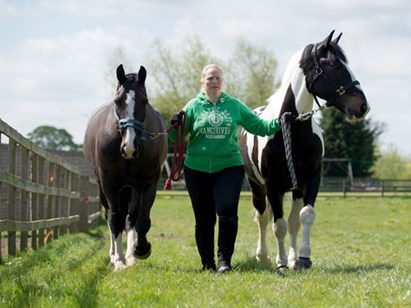Choosing a livery yard with good worm control A quick guide for horse owners

 From turnout options to arena surfaces there are many factors to consider when choosing the right livery yard for your horse. Whether it’s DIY, part or full livery and whatever your budget you want to ensure that the facilities and care will help you to keep your horse as happy and healthy as possible.
From turnout options to arena surfaces there are many factors to consider when choosing the right livery yard for your horse. Whether it’s DIY, part or full livery and whatever your budget you want to ensure that the facilities and care will help you to keep your horse as happy and healthy as possible.
The more horses that live together in one place, the more important parasite control becomes. Good worm control is fundamental to the management of a larger yard and this aspect of horse healthcare should be an important consideration for any owner choosing livery.
If you’re not quite sure what you should be looking for here are four essential questions to ensure you have it covered:
Do you have a worm control programme?
First and foremost you are looking for reassurance that someone understands the importance of parasite control and which horse worms to target at which time of year. Ideally this means the correct use of a regular test based programme for redworm, roundworm and tapeworm with worming doses for encysted redworm and other parasites such as bots and pinworm added as appropriate.
Worming programmes that rely on regular doses of wormer chemicals encourage resistance to build up to the drugs. Without regular monitoring using worm counts and the EquiSal saliva test, horses could still be at risk from potential problems.
Conversely a yard with no worming programme could expose your horse to unchecked parasite challenges and make life much more difficult for you to manage your own horse’s parasite burden. At worst it could put your horse at risk from serious illness and even death.
Who manages the worming programme?
Ideally one person should be in charge of coordinating a programme so that everyone is doing the same thing and all horses are covered. The testing and treatment programme can then be managed hand in hand with field changes and pasture management to maximise its effectiveness. Streamlining control in this way reduces the risk of parasite challenge and potentially the amount of proactive treatment you might need to give.
How do you manage the grazing?
In addition to a worming protocol, any pasture management techniques that break the lifecycle of the worms will be beneficial in reducing the parasite threat to horses. Poo picking paddocks, harrowing when done on dry bright days, and cross grazing with other animals are all good practice. Look for well-maintained pasture that is rested periodically and not over grazed. Good husbandry can help to reduce the number of chemical worming doses you need to give.
Look out for clean, well maintained paddocks and tidy muckheaps located at least three metres from adjacent grazing land (motile larvae can travel this far from droppings to re-infect grazing).
What about new horses coming on to the yard?
Best practice is to insist that new horses coming on to the yard with an unknown history are stabled/kept separately in poo picked paddocks and worm counted before being allowed on to the main fields with other horses. Here at Westgate we understand how stressful this can be for horse owners; we test all samples on the day we receive them and return results back the same day. This minimises isolation and means any treatment can be given as quickly as possible to prevent any potential contamination.
If the yard is perfect in every other way then you could always pass on the details of Westgate Labs’s commercial yard service and encourage them to move to targeted worm control!